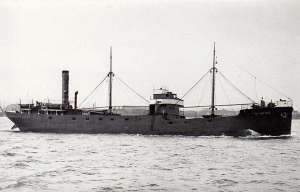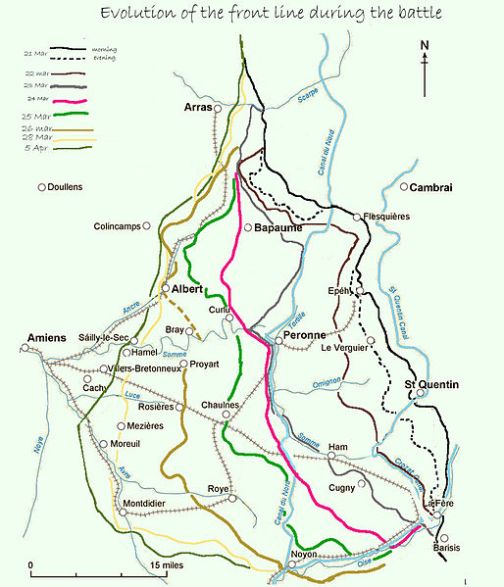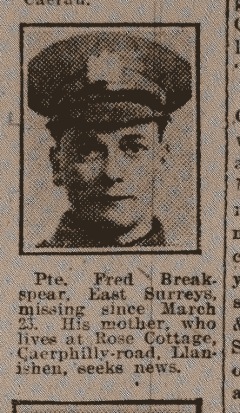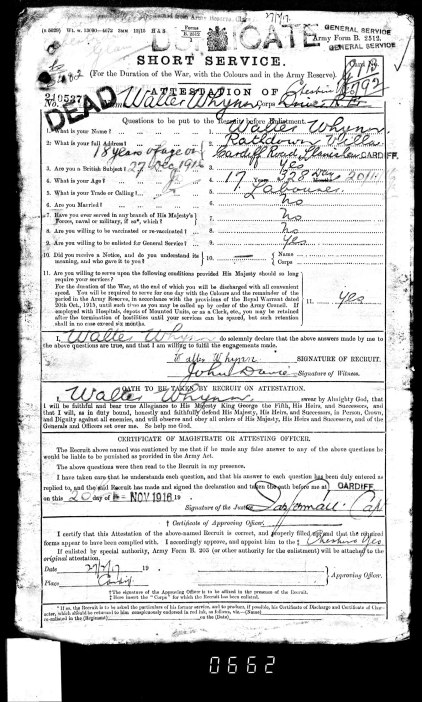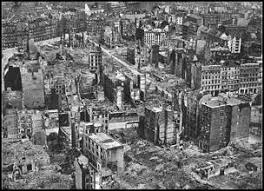War is very often described as a “young man’s game”. For most soldiers on the frontlines, even today, this is very much the case, but during the two World Wars men of all ages found themselves swept into the maelstrom of conflict. Many perished in the course of duties which, in ordinary times, would contain no extra risks, but in times of war were perilous.
The two oldest casualties from Llanishen lie at peace in St Isan’s churchyard. Both of them were merchant mariners, the innocents caught up in the vicious Battle of the Atlantic of 1940-43, when Nazi Germany attempted to starve Britain into submission by attacking her merchant lifeline.
The unusually named Windsor Spinks was the Chief Officer of the SS Stokesley when war broke out and served aboard his ship bringing supplies of chemicals over from the continent. The Stokesley was an old steamer built in Holland in 1922 and by April 1940 was under the ownership of a Cardiff-based firm. On the 24th April 1940 the Stokesley was entering the Thames estuary under the direction of a pilot when she struck a sea mine – whether it was a “friendly” or “enemy” mine is not recorded. She sank rapidly, taking down fourteen of the eighteen-man crew with her. Among that number was Chief Officer Spinks, a man killed in the course of a normal day’s work.
The SS Stokesley
A little over a year later, James Henry Blathwayt Eynon, a resident of Fidlas Road in Llanishen, was preparing to put his ship and crew to sea once more. He was the Master of the MV Benn Hann, a tanker built in 1940 and which had recently put in at Fort William. On the 10th November 1941 the ship departed Fort William and was never seen or heard from again. Seven days after she sailed a life raft with bodies – including that of Master Eynon, washed ashore near Port Ellen. The cause of her loss remains a mystery to this day, though there is speculation that it was either due to another mine or a U-Boat attack.
And the ages of these two casualties of the war at sea? Chief Officer Spinks was forty-seven, Master Eynon was forty-five. The Second World War was far from the preserve of the young.

